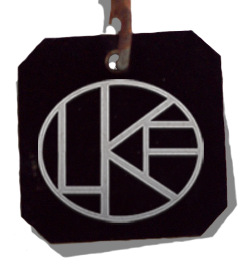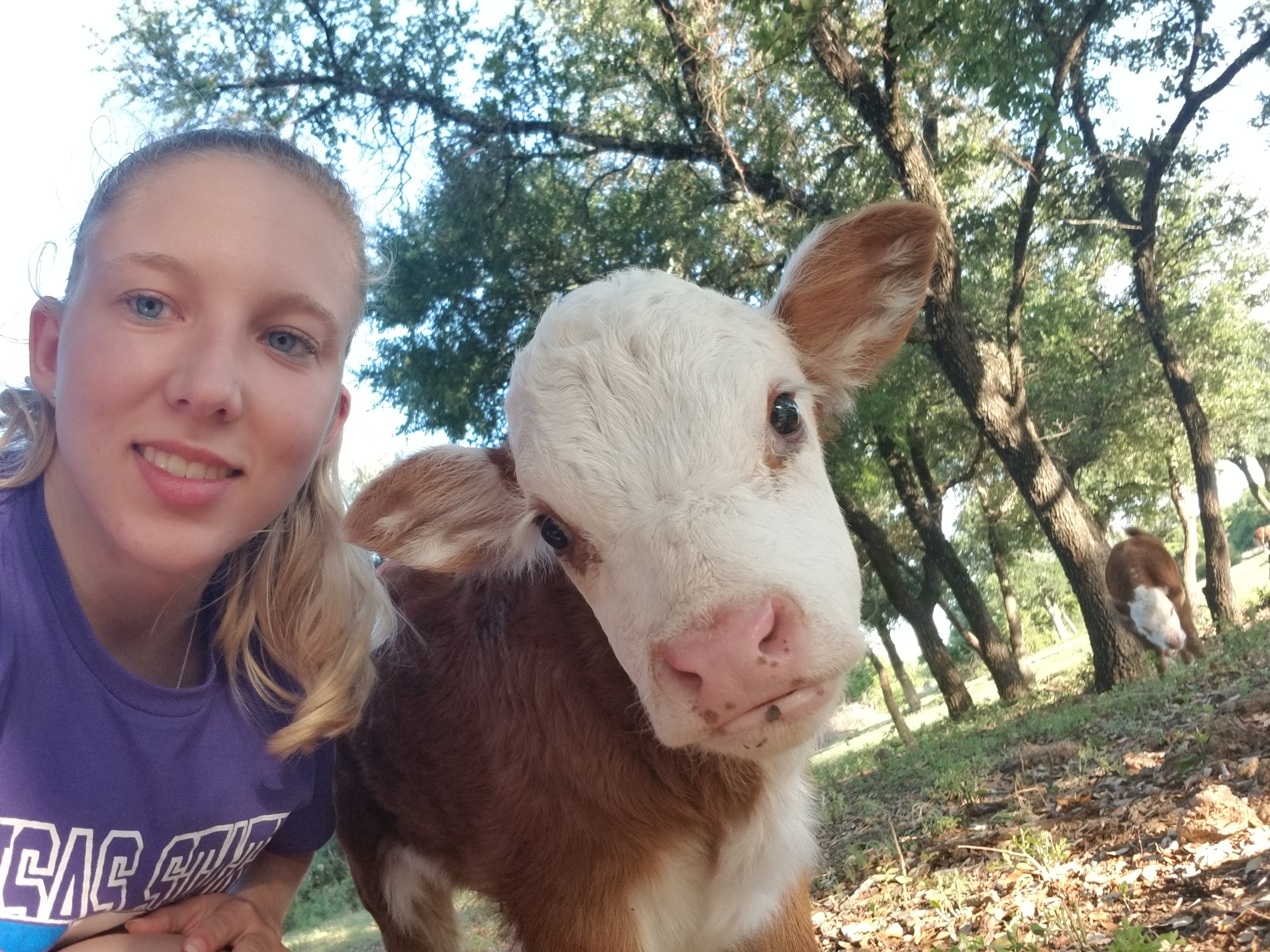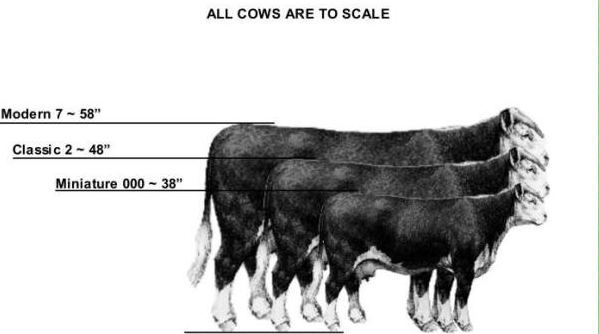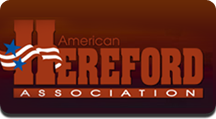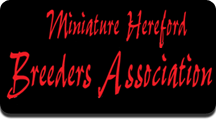Breed History
Miniature Herefords have been around for many years. They are neither a fad nor new to the cattle industry. They are direct descendants to full size Herefords and like their modern day counterpart (see size chart below), are required to be registered with the American Hereford Association.
Herefords date back to the mid 1700’s in Herefordshire, England where they were bred to efficiently convert grass to beef on smaller parcels of land. The breed was prized for its efficiency, disposition and early maturity. The first recorded Herefords were imported to the U.S. in 1817 by Kentucky statesman Henry Clay. Mr. Clays Herefords were eventually crossed with the Shorthorns resulting in a loss of the Hereford identity of Clay’s herd.
It wasn’t until 1840 that the first Hereford importation of record, by William H. Sotham and Erastus Corning, was responsible for the foundation of a purebred breeding herd. By the late 1870’s the Hereford started to appear in larger commercial herds as the cattle industry moved west. Throughout the 1870’s the Hereford gained strong footholds in Kansas, Nebraska, Colorado, Wyoming and Texas. These were then the largest cattle states with abundance of free grass, transportation and central markets.
From the turn of the century to the 1960’s, continued careful breeding of the Hereford resulted in a small highly efficient beef animal. The 1960’s also brought about a change with beef producers looking to produce larger animals to fill dinner plates. Herefords became bigger and longer legged eventually falling out of favor as the industry moved toward other larger breeds for their needs.
It wasn’t until the 1970’s that someone took an interest in breeding Herefords back to their more original or normal size. The Largent family of Fort Davis, Texas began with five cows and one bull. By 1981 the first true miniature Hereford bull was born. Today the tradition continues and many miniature Hereford breeders, as well as ourselves, are honored to carry a part of the Largent stock gene in their own herd.Breed History content
